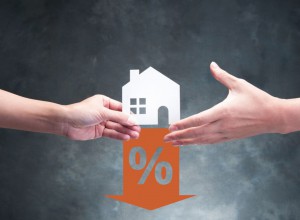What's next for interest rates?
For mine the RBA should take them down a notch to help stimulate our sagging property markets and raise consumer confidence which is suffering a crisis of confidence being battered on many fronts.
However it seems like the RBA is happy to sit things out until things get worse in the housing market.
Problem is the window of opportunity is closing for the RBA as they take a break in January and then there won't be many opportunities early next year as the RBA is usually reluctant to change rates in the months leading up to an election.
The ANZ Bank recently gave their thoughts on this in a note to their institutional, professional and wholesale clients.
Here's what the ANZ said:
We see house prices falling further and for longer.
This has implications for our RBA outlook.
We don’t think, at this stage, that the bigger decline challenges our expectation of an overall positive economic outlook for Australia.
However the risks are rising.
We view the house price declines in Sydney and Melbourne against the rapid run-up in prices over prior years.
The more than 15% fall we expect in these cities takes prices back to where they were a few years back.
We characterise this as an orderly decline.
We think the outlook is still tipped toward an eventual, though later, RBA rate hike.
While the RBA seems relaxed with the adjustment in house prices, it has noted the downside risk flowing from the fall.

We see this happening in early 2020, which suggests a rate hike sometime after.
We are picking August 2020, though it could be earlier if housing stabilises sooner.
The further we push out our call the greater the risk that we go through the entire cycle without an RBA move.
What to watch
Victorian election (24 Nov): The latest polls suggest Labor will return.
Construction work done, Q3 (28 Nov): We are looking for a small increase.Private capex, Q3 (29 Nov): We see an increase in capex for the quarter and a lift in expectations for the year.
Private sector credit, Oct (30 Nov): A further slowing is expected.
RBA Speeches (26 Nov): The topic of the Governor’s speech is “A Journey Towards a Near Cashless Payments System”, while the Assistant Governor (Financial Markets) is speaking on “Securitisation and the Housing Market.”
Housing downturn deeper and longer
While the decline in Sydney and Melbourne housing prices has been broadly in line with expectations to date, we had thought the pace of decline would be showing clear signs of slowing by now.
This does not appear to be the case.
Accordingly, we have revised our housing price forecasts lower.
See our updated outlook for the housing market.
As is characteristic of this cycle, which is unusually led by prudential tightening, there is material uncertainty around the outlook.
It is difficult to ascertain for how long banks will continue to implement further credit tightening.

Risks to the upside include the possibility that a strong competitive response across lenders limits the further tightening of credit, or even unwinds some of the recent changes.
Improving affordability could drive buyers back to the market earlier than anticipated.
Also, the dwelling price adjustment is coinciding with falling unemployment and rising household income.
This is likely to continue despite the weaker housing market, which in turn helps affordability.
RBA rate hike likely delayed until 2020
We don’t think the fall in house prices will derail the Australian economy.

Few home owners will be facing material losses or negative equity, though there will be some.
It seems unreasonable, though, to expect the credit tightening and the associated drop in prices to have no impact.
For instance, we think there will be a sizeable pullback in residential investment over the next few years – primarily reflecting the tightening in the availability of credit (Figure 2).
Our forecasts already incorporate a fall in residential investment.
As far as household consumption is concerned, there is little evidence that consumer sentiment has been unduly affected by the drop in house prices.
ANZ-Roy Morgan Australian Consumer Confidence is well above average and higher than it was a year ago, for instance (Figure 3).
At the national level, prices are down by less than 5% over the past year.

This seems unlikely, given the media’s attention to house prices.
More likely we think it reflects the offsetting influence of a strong labour market.
We think weaker house prices will weigh on consumption to some extent.
In particular, we think households will be less willing to run down their saving rate over the next couple of years.
Instead we have consumption growth broadly in line with how fast income is growing.
As far as income growth is concerned the modest acceleration in wages, the fading drag from changing composition and income tax cuts combine to push it higher than it has been in recent years.

The RBA has a similar view on the saving rate, but its expectation of faster income growth means that the “household consumption growth…at around 3 per cent…is expected to continue.”
As such it is more bullish on the growth outlook overall than we are.
This might suggest that it is unlikely to view falling house prices as much of a constraint on its policy choices.
The RBA is aware of the risks.
In the November Statement of Monetary Policy the Bank stated that: The outlook for household consumption growth continues to represent a significant uncertainty for the forecasts.
This derives from uncertainty about the outlook for household income growth as well as uncertainty about how households may respond to significant housing price declines.

This has always been our view, with our August 2019 expectation for the start of the RBA tightening cycle reflecting our previous expectation that house prices would broadly stabilise in the first half of 2019.
Now that we see house prices falling for longer, there are direct implications for our thinking about the timing of the first RBA move.
And the longer the tightening cycle is delayed the greater the chance that it never gets underway.
In thinking about our RBA call we reviewed removing a rate hike from our forecasts entirely.

We don’t think this is the case, given the outlook we have for unemployment and inflation.
So we have retained an expectation the RBA will tighten, but have pushed it out to August 2020 based on our expectation of housing prices entering a broadly stable pattern by early 2020.
Earlier is possible if house prices stabilise sooner than we expect.
Data previews
We believe construction nudged higher again in Q3.
The public sector is likely to be a key component of this result, especially on the engineering side as work on road and rail infrastructure continues to pick up.
Privately funded work is likely to ease as some mining projects approach completion, and we think housing construction will begin to pull back from its current peak.
Ignore the sharp overall y/y fall; this just reflects the importation of a large LNG module a year ago.
We believe capital expenditure rose slightly in Q3, but not enough to offset the fall from Q2.
Importantly, we expect to see solid growth in machinery and equipment spending (which flows directly into GDP) on the back of solid business conditions and reported investment plans.
But the overall spending number is likely to be weighed down by soft engineering construction on the mining front.
We also expect a solid upgrade to firms’ spending plans for 2018-19 in line with the broadly healthy business environment.
We expect private sector credit growth to have slowed to 0.3% in October.
The main weight continues to be the greater difficultly in accessing credit for housing investors and owner occupiers.
Loan approvals data suggests that business credit growth eased in October and will continue to do so for the rest of 2018.
Source: The ANZ Bank note to their institutional, professional and wholesale clients. This is general in nature and should not be taken as advice.























